| Years in Sweden: | 1772 1773 1774 1775 1776 1777 1778 |
| Centuries: | 17th century · 18th century · 19th century |
| Decades: | 1740s 1750s 1760s 1770s 1780s 1790s 1800s |
| Years: | 1772 1773 1774 1775 1776 1777 1778 |

Events from the year 1775 in Sweden
| Years in Sweden: | 1772 1773 1774 1775 1776 1777 1778 |
| Centuries: | 17th century · 18th century · 19th century |
| Decades: | 1740s 1750s 1760s 1770s 1780s 1790s 1800s |
| Years: | 1772 1773 1774 1775 1776 1777 1778 |

Events from the year 1775 in Sweden
| | This section needs expansion. You can help by adding to it. (June 2015) |
| | This section needs expansion. You can help by adding to it. (June 2015) |
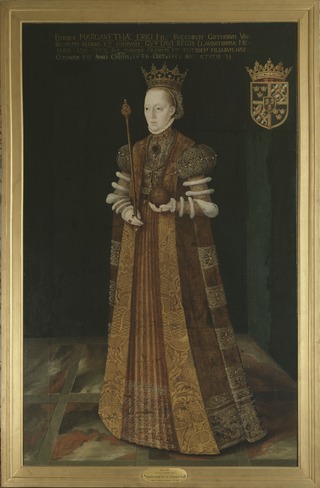
Margaret Leijonhufvud was Queen of Sweden from 1536 to 1551 by marriage to King Gustav I. She played a political role as the advisor of, and the intermediary to, her spouse the King.

The Drottningholm Palace is the private residence of the Swedish royal family. Drottningholm is near the capital Stockholm. Built on the island Lovön, it is one of Sweden's Royal Palaces. It was originally built in the late 17th century, and it served as a regular summer residence of the Swedish royal court for most of the 18th century. Apart from being the private residence of the Swedish royal family, the palace is a popular tourist attraction.

Frederica of Baden was Queen of Sweden from 1797 to 1809 as the consort of King Gustav IV Adolf.
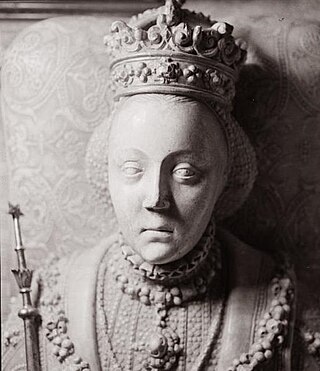
Catherine of Saxe-Lauenburg was the first wife of Gustav I of Sweden and thus Queen of Sweden from 1531 until her death in 1535.

Sophia Magdalena of Denmark was Queen of Sweden from 1771 to 1792 as the wife of King Gustav III.
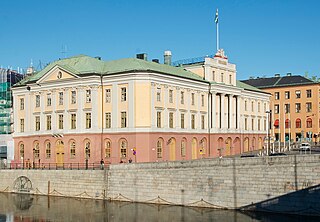
Arvfurstens palats is a palace located at Gustav Adolfs Torg in central Stockholm.

Ulrika "Ulla" Eleonora von Höpken, later von Wright, née von Fersen, was a Swedish countess and courtier. She is also famous in history as one of "the three graces" of the Gustavian age; three ladies-in-waiting immortalized in the poem Gracernas döpelse by Johan Henric Kellgren. She was a leading socialite and trendsetter in contemporary Sweden, and one of the best known personalities of the Gustavian age.
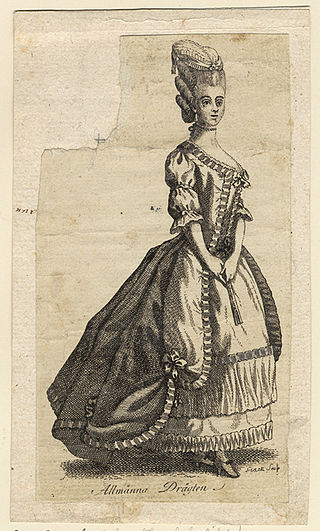
Nationella dräkten is a historic Swedish costume, designed by King Gustav III and introduced in 1778. It was designed for the nobility and the middle class with the intention of limiting rising consumption and import of luxury within fashion, which was considered a drain on the economy and detrimental to society because of ensuing poverty. A masculine and a feminine costume were designed. The woman's version of the costume was to have a lasting effect, modified several times later, as the official costume of the Royal Court.
Johanna "Jeanna" von Lantingshausen, née von Stockenström, (1753–1809), was a Swedish noble and courtier. She is foremost known as the instigator of the political demonstration by the noblewomen toward Gustav III in opposition of his parliamentary act of 1789.

Events from the year 1851 in Sweden
Events from the year 1806 in Sweden

Events from the year 1772 in Sweden
Events from the year 1786 in Sweden
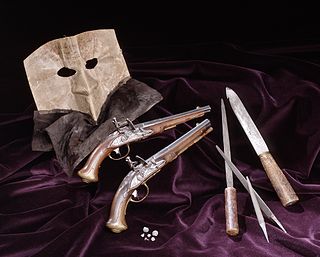
Events from the year 1792 in Sweden

Events from the year 1798 in Sweden

Events from the year 1766 in Sweden

Events from the year 1753 in Sweden

Events from the year 1777 in Sweden

Events from the year 1748 in Sweden
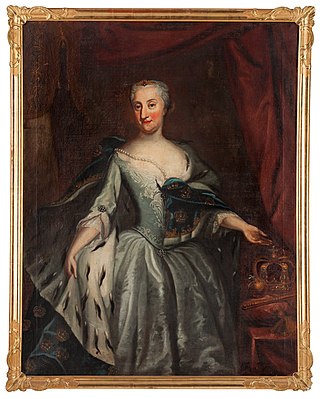
Events from the year 1719 in Sweden